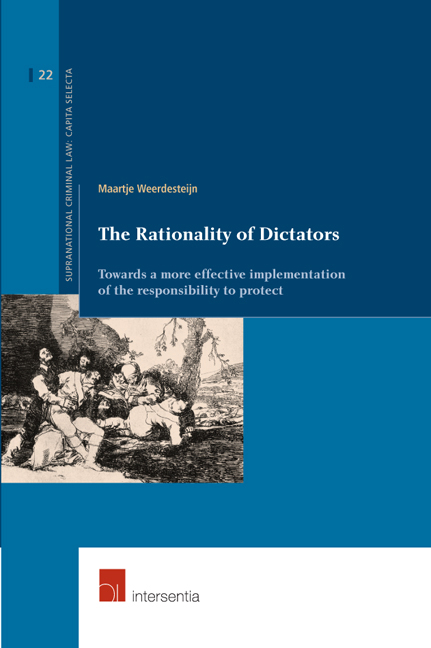 The Rationality of Dictators
The Rationality of Dictators from Part II - The Comparative Case Study
Published online by Cambridge University Press: 28 September 2018
INTRODUCTION
In the 1990s, the horrible violence that took hold over the Balkans shocked the world. The communist dictator Josip Broz Tito had promoted ‘brotherhood and unity’ among the peoples living in Yugoslavia since he came to power after World War II, but after he died in 1980, the federation would soon unravel (Fine, 2006, p. 277; Kollander, 2004, pp. 7-8). In the years that followed, Yugoslavia's economy started to falter. These problems were exacerbated by the end of the Cold War, which caused the country to lose some of its strategic importance and international prestige (Woodward, 1995, pp. 15-16). The rising nationalism that subsequently swept through the region would soon lead to the dissolution of the country. After Slovenia declared independence in the summer of 1991, a ten-day war followed in which 50 people lost their lives. Slovenia was relatively homogeneous in its ethnic composition, and it was apparent that it had a strong national guard ready to protect the country (Kollander, 2004, p. 7; 10). In Croatia, on the other hand, about 12 % of the population was Serb (Kollander, 2004, p. 10), and in Bosnia, matters were even more complicated. About 40 % of the population were Bosnian Muslims, or Bosniaks, and the country furthermore was home to large Serbian and Croatian minorities (Kollander, 2004, p. 11). With their declarations of independence, war between these parties was imminent as the Croat and Serb minorities had been seeking to unite with their ‘mother country’ and the Bosnian Muslims also feared remaining in a Serb dominated Yugoslavia (Kollander, 2004, p. 11; LeBor, 2006, p. 26).
A long and brutal war followed, especially in Bosnia, where towns were cleansed of their minority populations. It entailed brutal campaigns of killings, intimidation, rape and other brutal acts (Kollander, 2004, p. 12). After peace was established between the former republics of Yugoslavia, violence also erupted in Kosovo. As will be more extensively covered in Chapter 11, the violence caused NATO to take collective action, hoping to force Milosevic to refrain from using further violence. An 11 week bombing campaign ensued, during which NATO demanded that Serbia withdrew its forces and commit to a ceasefire while agreeing to the deployment of an international force to the region, allowed refugees to return, and grand humanitarian agencies unimpeded access (Roberts, 1999, pp. 102-103).
To save this book to your Kindle, first ensure [email protected] is added to your Approved Personal Document E-mail List under your Personal Document Settings on the Manage Your Content and Devices page of your Amazon account. Then enter the ‘name’ part of your Kindle email address below. Find out more about saving to your Kindle.
Note you can select to save to either the @free.kindle.com or @kindle.com variations. ‘@free.kindle.com’ emails are free but can only be saved to your device when it is connected to wi-fi. ‘@kindle.com’ emails can be delivered even when you are not connected to wi-fi, but note that service fees apply.
Find out more about the Kindle Personal Document Service.
To save content items to your account, please confirm that you agree to abide by our usage policies. If this is the first time you use this feature, you will be asked to authorise Cambridge Core to connect with your account. Find out more about saving content to Dropbox.
To save content items to your account, please confirm that you agree to abide by our usage policies. If this is the first time you use this feature, you will be asked to authorise Cambridge Core to connect with your account. Find out more about saving content to Google Drive.